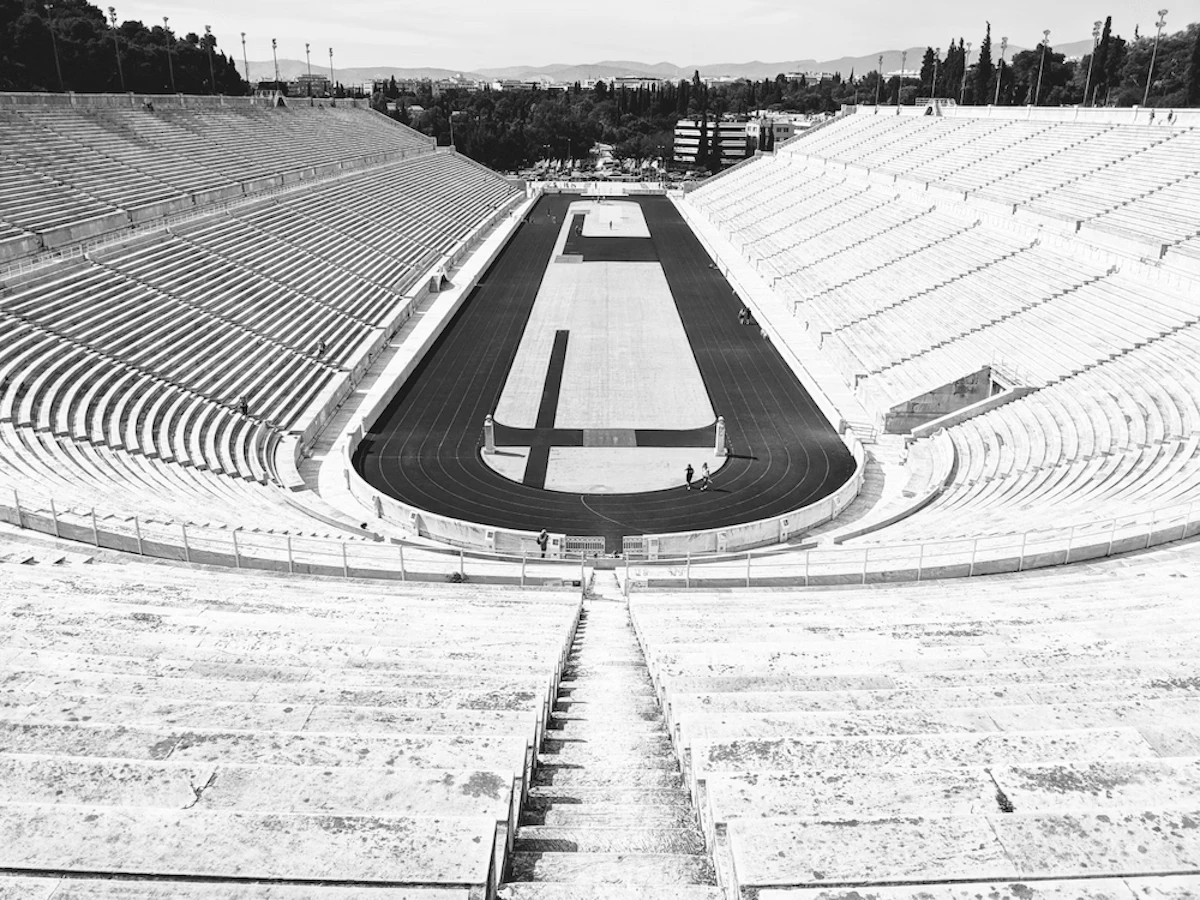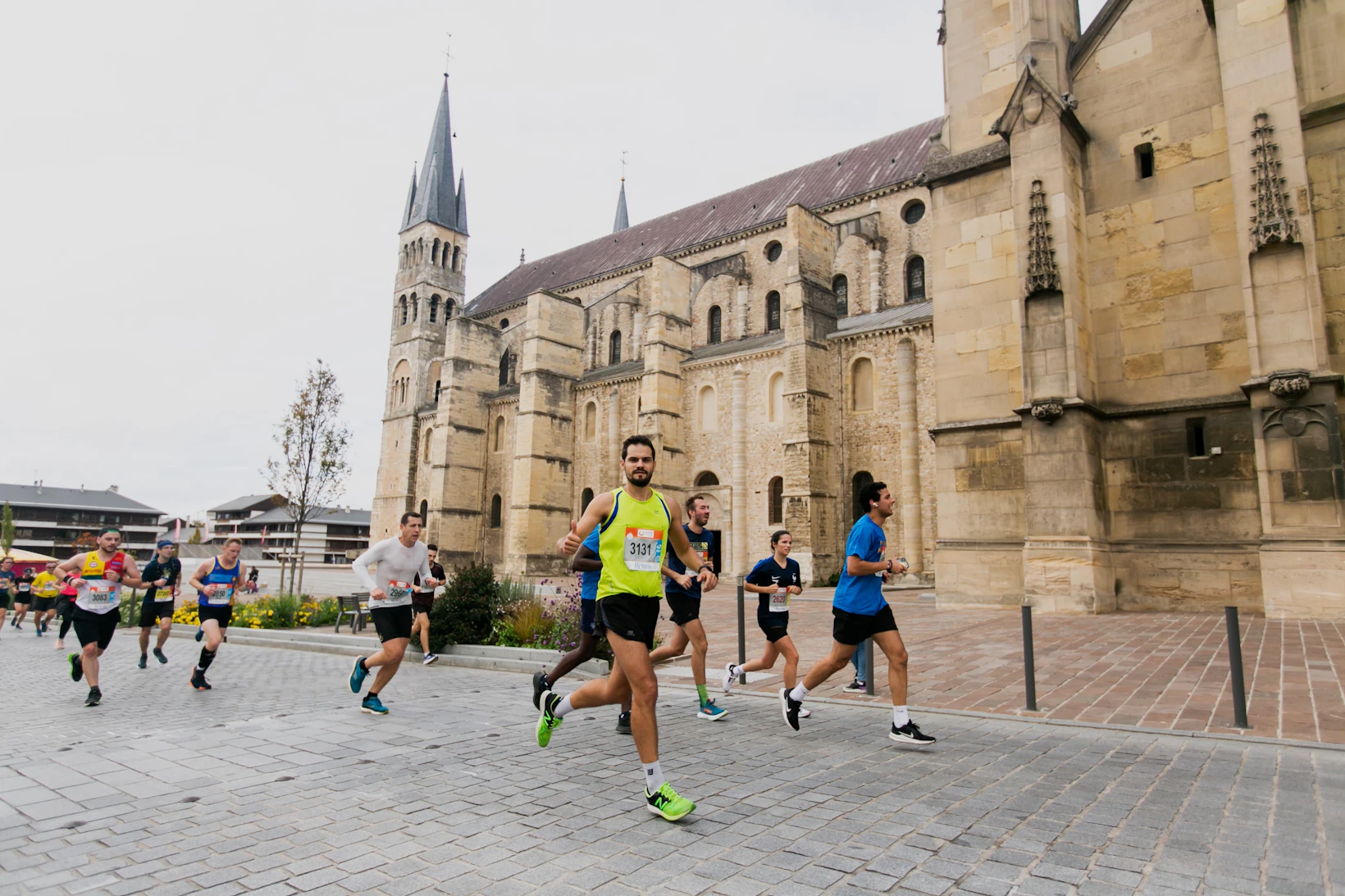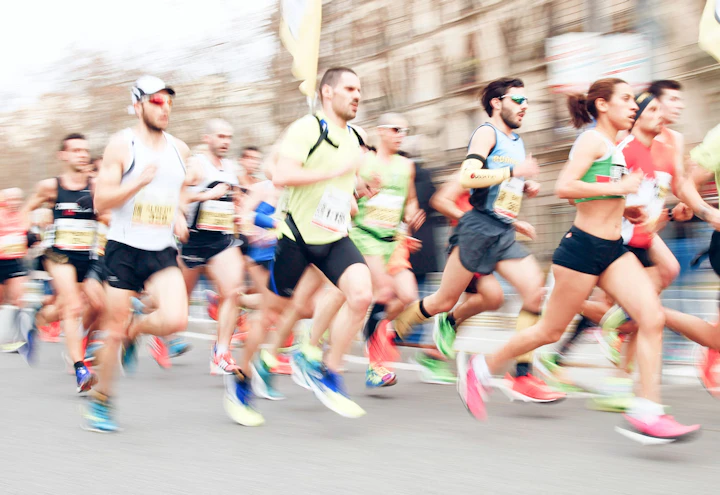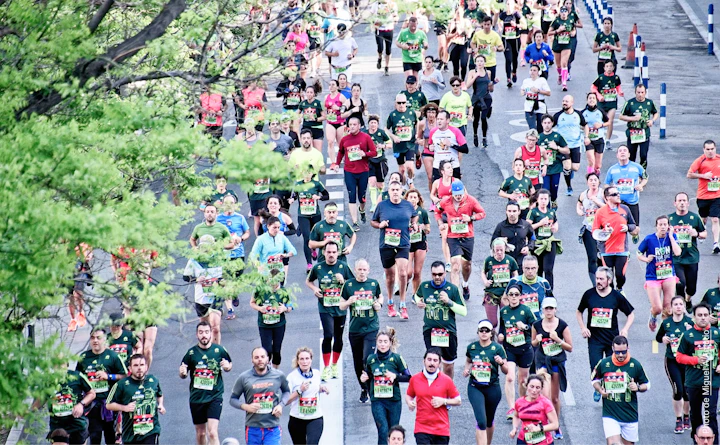
10 min read
Summary
Why an exact distance of 42.195 kilometers for the marathon event? A little history...
📨 The legend of Phidippides at the origin of this race
🏆 From the first modern Olympic Games in Athens to those of London in 1908
✅ A standardization of the marathon distance in kilometers in 1921
How can you be sure that a marathon is the correct distance in kilometers?
📏 Official measurement in kilometers of the marathon format
☘️ Boston, a legendary marathon but not certified
What time per kilometer for a marathon in 4 hours 30 minutes? in 4 hours? in 3 hours 30 minutes?

Receive advice from our passionate coaches!
More than 1,000 marathons are organized each year around the world. From London to Tokyo, from Paris to New York, some are harder to run than others. However, you can be sure of one thing: all marathons sanctioned by World Athletics, the international athletics federation, are exactly the same distance. An absolutely not 'round' distance, whatever the unit of measurement used, in kilometers or in miles. Let's tell you the little story of the marathon distance.
Why an exact distance of 42.195 kilometers for the marathon event? A little history...
Before it was officialized over a century ago, the marathon distance in kilometers fluctuated throughout history.
📨 The legend of Phidippides at the origin of this race
To find the origin of the marathon, one must go back to ancient Greece, over 2,500 years ago. Several versions of the story exist. The following version is the most Homeric. It is 490 BC, at the end of the first Persian War between the Greeks and the Persians. Athenian and Plataean soldiers have just defeated the Persians in the Battle of Marathon. A messenger, Phidippides (or Philippides), is tasked with running to Athens on foot to announce the Greeks' victory. According to legend, Phidippides, exhausted after his course of about forty kilometers to the Areopagus of Athens, would have taken his last breath just after fulfilling his task. The modern marathon distance roughly corresponds to the journey of this Greek messenger.

🏆 From the first modern Olympic Games in Athens to those of London in 1908
The marathon is an event dating back to the first modern Olympic Games in 1896, and is run on the same mythical course between the cities of Marathon and Athens, approximately 40 kilometers. The first Olympic marathon in history was won by a Greek shepherd, Spyrídon Louis, in 2 hours 58 minutes and 50 seconds. Only ten athletes complete the event. Another Greek athlete, Spyridon Belókas, is disqualified for having completed part of the race at the back of a cart.
At the 1900 Paris Olympics, the marathon event gathered thirteen participants, was contested over a distance of 40.26 kilometers and was won by the Frenchman Michel Théato in 2 hours 59 minutes and 45 seconds. In 1904, the American Thomas Hicks won in 3 hours 28 minutes and 53 seconds in the marathon of the St. Louis Olympic Games, contested over 40 kilometers. The first runner to reach the finish line, his compatriot Fred Lorz, is disqualified for having run 18 kilometers in his coach's car! ⛔
The exact distance of the marathon was established four years later, at the 1908 London Olympics. During these games, the initial course measures exactly 26 miles and runs from Windsor Castle to the Olympic Stadium in London. At the request of the British royal family, it was extended by 385 yards, to finish in front of King Edward VII's royal box at White City Stadium. The distance of 42.195 kilometers exactly corresponds to these 26 miles and 385 yards.
✅ A standardization of the marathon distance in kilometers in 1921
History is not over. Indeed, the Olympic marathon distance would still vary in the early 20th century: 40.20 kilometers at the 1912 Stockholm Games, then 42.75 kilometers at the 1920 Antwerp Olympics. It was officially standardized at 42.195 kilometers by the International Association of Athletics Federations (IAAF) in 1921. Since the 1924 Paris Olympic marathon, won by Finnish runner Albin Stenroos (2 hours 41 minutes and 22 seconds), all Olympic marathons and all labeled marathons have been run at this exact distance.
How can you be sure that a marathon is the correct distance in kilometers?
To be certain that your next marathon counts the official distance, you just need to verify that it is certified by the French Athletics Federation if you're running in France, or by European Athletics or World Athletics if you're running abroad.
📏 Official measurement in kilometers of the marathon format
You can easily check on the French Athletics Federation website if the marathon of your choice has a label (regional, national, or international). In any case, a marathon that has obtained the qualifying or ranking race label of the FFA has the correct distance, with a precision of 0.1%, or 42 meters.
To qualify, a marathon must meet criteria other than the distance in kilometers. The distance between the starting point and the finish line must be less than 21.1 kilometers. The drop of the course, which is the altitude difference between the finish and start, is 42 meters maximum. You will easily understand that a downhill race with the wind at your back offers some advantages. However, in reality, negative elevation changes are not always a gift for your legs. Indeed, eccentric efforts in downhill accelerate muscular fatigue.
☘️ Boston, a legendary marathon but not certified
The Boston marathon, one of the most prestigious in the world, is not certified. As a reminder, the start of the Boston marathon is given at Hopkinton, about forty kilometers from the capital of Massachusetts, and the drop of the course is about 120 meters, thus well above the allowed limit of 42 meters.
For these reasons, the performance achieved in 2011 by Geoffrey Mutai was not certified. That year, the Kenyan won in 2 hours 3 minutes and two seconds, nearly a minute less than the world record at the time, held by Haile Gebrselassie. His performance was not certified by World Athletics. However, his Boston record still stands.
We can also mention the Marathon Vert de Rennes. The results of the 2015 French marathon championships were not certified because the course profile was too downhill. Since then, the course has been modified. Today, the race is certified international gold label.

What time per kilometer for a marathon in 4 hours 30 minutes? in 4 hours? in 3 hours 30 minutes?
Since you know the exact distance of an official marathon, you can determine your marathon speed based on your time goal. In running, we prefer to use the term 'pace' and express this pace in minutes and seconds per kilometer. It's more practical, as it provides better benchmarks than a speed expressed in kilometers per hour.
Here is a pace chart, which will save you from tedious calculations.
| Target time for marathon | Marathon pace (min/km) |
|---|---|
5:00 | 7’06 |
4:45 | 6’45 |
4:30 | 6’23 |
4:15 | 6’02 |
4:00 | 5’41 |
3:45 | 5’19 |
3:30 | 4’58 |
3:15 | 4’37 |
3:00 | 4’15 |
2:45 | 3’54 |
In the end, the journey of the marathon – a timeless test of endurance – reminds every marathon runner that crossing the finish line is not merely about covering 42.195 km (or roughly 26 miles) but about honoring the legacy of the battle of Marathon in ancient Greece, where the original legend set the stage for what would become the modern Olympic Games. While at the 1908 London Olympic the route was extended to start at Windsor Castle, pass in front of the royal box, and arrive at the Olympic Stadium, that very moment standardized the marathon distance for elite events worldwide. From the hallowed streets of Boston at the Boston Marathon to the cheering crowds at the New-York City Marathon, the spirit of the race lives on. Under the guidance of a smart marathon training program, even amateur runners can feel connected to icons like Eliud Kipchoge and their historic marks. Whether you’re lining up at the start or sprinting into the finish, you’re part of a story that begins in ancient Greece, spans continents and centuries, and still resonates as you cross the finishing line. Let that inspire you to set your sights, lace up your shoes, and embrace the challenge – the marathon is yours.
Thanks to the standardization of the marathon distance, it has become easier to evaluate performances in this event. Nevertheless, keep in mind that other criteria such as elevation gain, the course layout, altitude, or external conditions directly impact the difficulty of a marathon. Yes, the marathons of New York and Valencia are exactly the same distance, but we can assure you that the latter is much more conducive to world records than the former! 🚀







